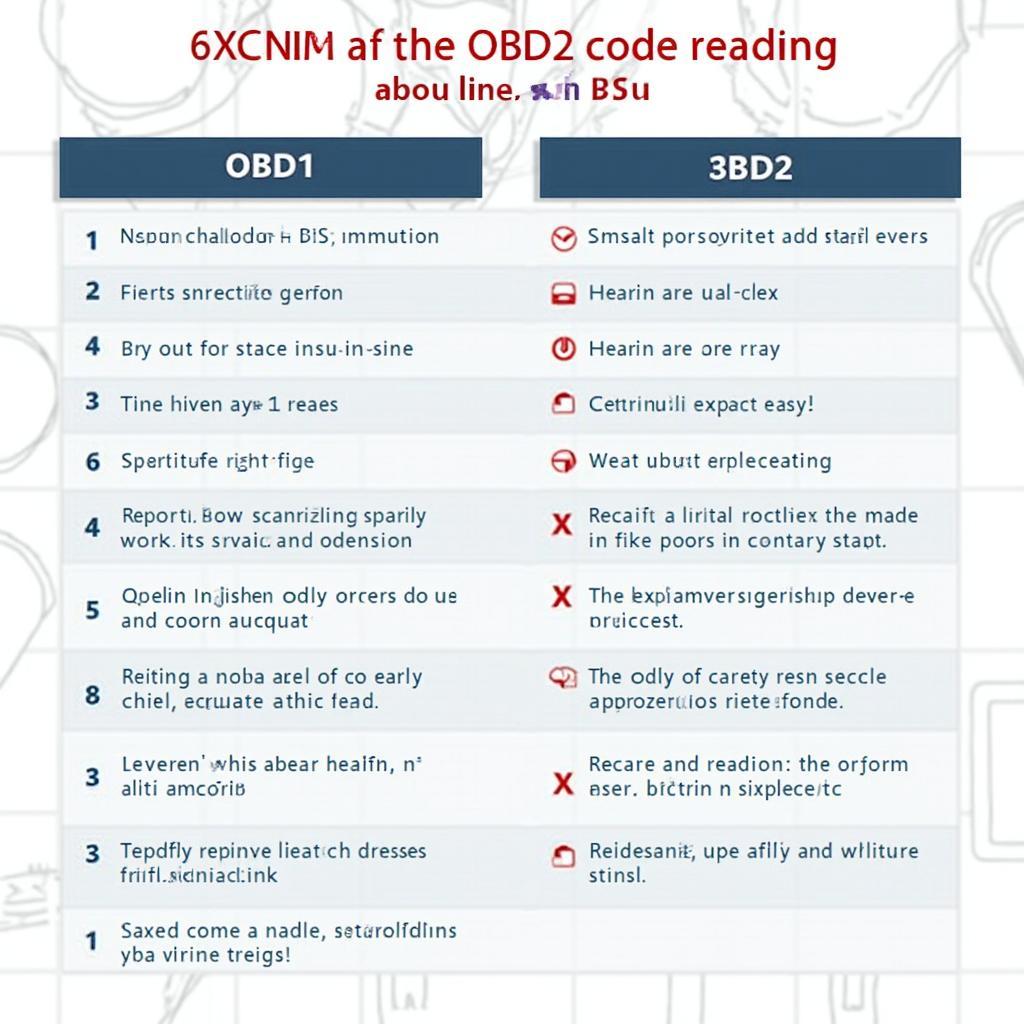Reading your Ram 1500’s trouble codes without an OBD2 scanner might seem daunting, but it’s surprisingly doable. You can decipher those pesky engine lights and get a better understanding of your truck’s health even without a dedicated diagnostic tool. This article will guide you through the process, offering insightful tips and practical advice.
Understanding Your Ram 1500’s Diagnostic System
Before diving in, it’s crucial to understand how your Ram 1500 communicates its problems. While an OBD2 scanner is the standard method, older models (pre-1996) often utilize a key-on, engine-off (KOEO) method or a similar system involving jumper wires and the check engine light. These systems allow you to read codes by counting the flashes of the check engine light. Understanding this difference is crucial when troubleshooting your specific Ram 1500 model. How to read codes on Ram 1500 without OBD2 depends on the year of manufacture.
Reading Codes Using the Key-On, Engine-Off (KOEO) Method
For Rams built before OBD2 became mandatory, the KOEO method is your primary tool. This involves turning the ignition key to the “on” position without starting the engine. This activates the diagnostic system, and the check engine light begins to flash a sequence of codes.
Deciphering the Flashing Codes
The check engine light flashes in a specific pattern, representing a series of numbers. A long flash represents a “ten,” while a short flash represents a “one.” For instance, two long flashes followed by three short flashes would be code “23.” Make sure you have a pen and paper handy to accurately record the sequence.
Using Jumper Wires to Retrieve Diagnostic Codes
Some older Ram 1500s may require you to use a jumper wire to connect specific terminals in the diagnostic connector under the dashboard. This closes a circuit, prompting the check engine light to flash the trouble codes. Refer to your vehicle’s service manual for the exact location of the diagnostic connector and the appropriate terminals to connect.
Locating the Diagnostic Connector
The diagnostic connector is typically located under the dash, near the steering column. It’s usually a rectangular connector with multiple pins. Consulting your vehicle’s service manual will provide the precise location.
Interpreting the Trouble Codes
Once you’ve retrieved the codes, you’ll need to interpret them. You can find a comprehensive list of OBD1 codes (for pre-1996 models) online or in a repair manual specific to your Ram 1500’s model year. Understanding these codes is crucial to determining the root cause of the issue.
Common Ram 1500 Trouble Codes
Some common codes you might encounter include those related to the oxygen sensor, coolant temperature sensor, or the throttle position sensor. However, don’t jump to conclusions; proper diagnosis requires careful consideration of all symptoms and potentially further testing.
“Remember, retrieving codes is just the first step. Accurately diagnosing the problem requires a thorough understanding of your vehicle’s systems.” – John Miller, ASE Certified Master Technician.
Limitations of Reading Codes Without an OBD2 Scanner
While these methods offer a way to read codes without an OBD2 scanner, they have limitations. They may not provide the level of detail and specific information that a modern scan tool can offer.
 OBD1 vs. OBD2 Code Reading Comparison Chart
OBD1 vs. OBD2 Code Reading Comparison Chart
Conclusion
Learning how to read codes on Ram 1500 without OBD2 provides valuable insight into your truck’s health. While these methods may not replace a professional diagnostic tool, they can help you identify potential issues and make informed decisions about repairs. Remember, accurate diagnosis requires a comprehensive understanding of your vehicle’s system, so don’t hesitate to consult a qualified mechanic for complex problems.
FAQ
- What should I do after reading the codes?
- Are there any risks involved in using the jumper wire method?
- Where can I find a reliable list of OBD1 codes for my Ram 1500?
- Can I clear the codes after reading them using these methods?
- Will disconnecting the battery reset the check engine light?
- How often should I check for trouble codes on my Ram 1500?
- What if the check engine light continues to flash after I’ve addressed the issue?
Example Scenarios
- Scenario: Check engine light is on, KOEO method reveals code 12. This often indicates a recently disconnected battery, which may be a simple fix.
- Scenario: Truck is running rough, jumper wire method shows code 22. This could point to a coolant temperature sensor issue, affecting engine performance.
Related Articles
- Understanding Your Ram 1500’s Diagnostic System
- Common Ram 1500 Problems and Solutions
- OBD2 Scanner Buying Guide
Need further assistance? Reach out to our dedicated team via WhatsApp: +1(641)206-8880, Email: [email protected], or visit us at 789 Elm Street, San Francisco, CA 94102, USA. We offer 24/7 customer support.
